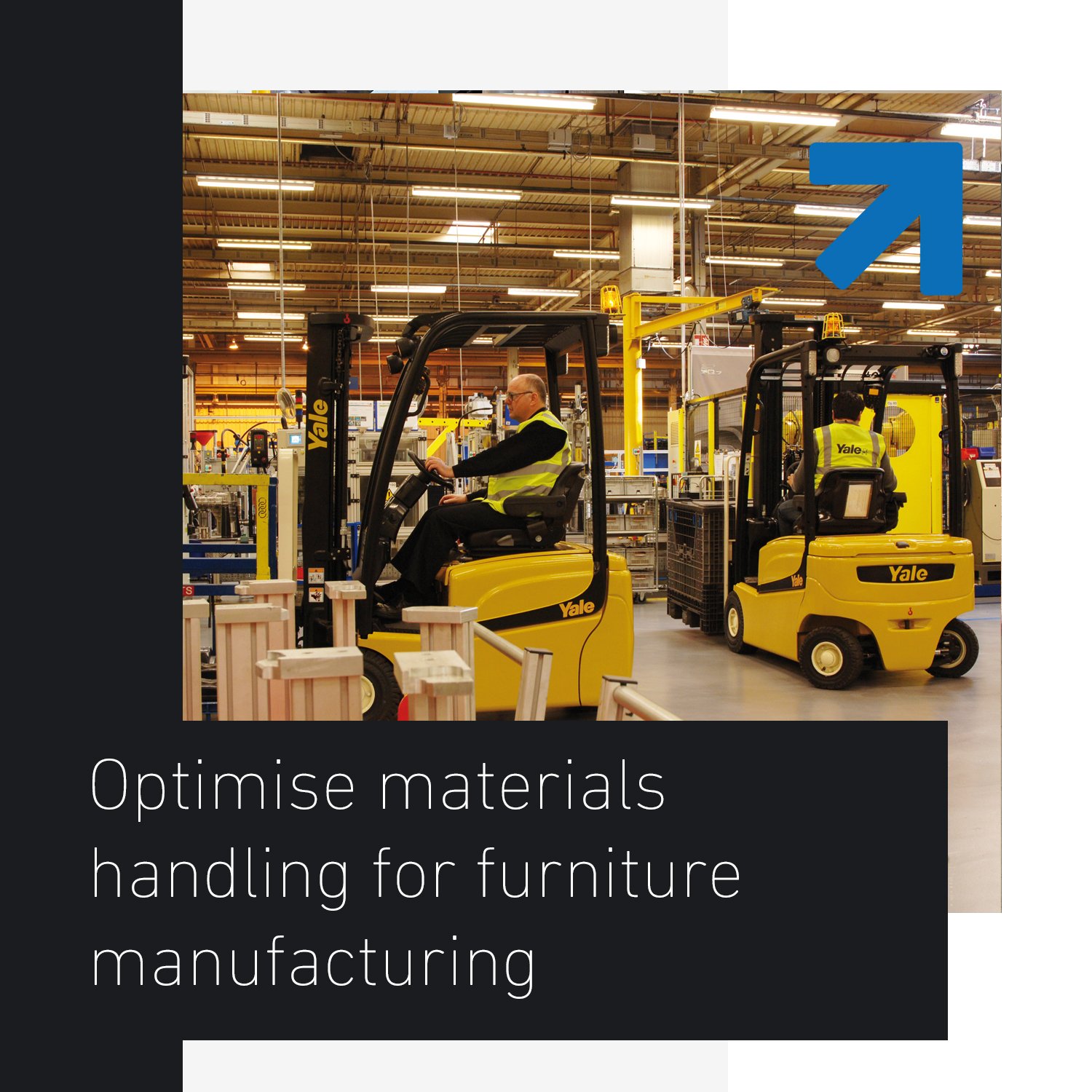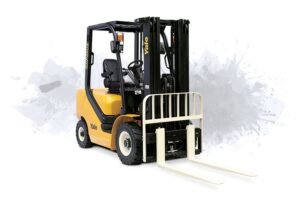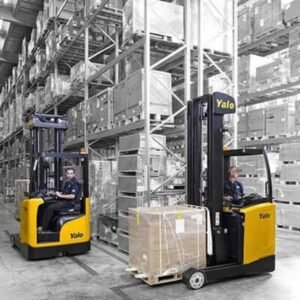
Articles

Forklift industrial truck designed to lift and transport large and heavy objects. Consider factors such as the type and weight of materials handled, the operational environment, and facility size. Forklifts find common use in warehouses, construction sites, and other locations requiring the transportation of heavy items. Forklifts represent a technology employed for the movement of substantial loads. Workers have been able to carry things effortlessly to new areas. These technologies allow workers to boost their output while removing the physical strain of lifting large goods.
Forklift trucks, commonly known as forklifts, are indispensable workhorses in numerous industries One of the key factors in achieving these goals is the effective handling and transportation of heavy loads. Enter the forklift truck, a versatile and powerful machine that has revolutionized material handling and logistics across industries worldwide. This comprehensive article delves into the world of forklift trucks, exploring their history, design, functionalities, safety considerations, and their vital role in modern industrial operations. Forklift trucks have become the backbone of modern industrial operations, streamlining material handling processes and transforming logistics.
Forklift purpose in warehouses :

- The primary use of a forklift is to transport heavy items over long distances in different weather. It’s suitable for tasks that require many supplies in other places and saves time and effort in lifting, carrying, and transporting them.
- The primary use of a forklift is to transport large, heavy goods over rough terrain over long distances. It saves time and effort while working on projects that require a lot of resources to be located in various locations. Also, one of the most adaptable vehicles for engineers is the forklift.
- Forklifts are essential on any job site because they can securely lift huge things that humans cannot, whether you need to move them in a warehouse or on a worksite.
The Advantages of Forklifts: Enhancing Material Handling Efficiency:

- Training: The ultimate advantage of forklifts is the ability to find relevant training programmers for each level of operator wishing to launch their career or improve their capabilities in the warehousing and transportation industry. For total beginners, training can begin at the “beginner” level and teach you all you need to know about forklifts from scratch. You can continue “good primer” training to improve your forklift-related knowledge and skills.
- Industrial Forklifts enable businesses to move things around quickly: They decrease the time needed to carry items and do away with the requirement for labor. Additionally, forklifts would allow firms to take items upward and downward to places otherwise inaccessible by hand.
- Time-saving: All heavy products can be moved quickly, quietly, and carefully by drivers with extensive training and experience. Forklifts can raise morale quality and decrease stress in the workplace, Employee morale is higher, and stress levels are lower when safety and health stress at work, with a strong focus on operator training.
Maximizing Warehouse Efficiency: Unleashing the Power of Advanced Material Handling Solutions, featuring lift truck
The companies and warehouses employed a system of ropes cables, and pulleys to move big crates, boxes, And objects before we invented forklifts.
This approach was complex and introducing forklifts considerably improved worker safety.
Reducing human needs, One of the main advantages of purchasing an autonomous forklift is reducing human involvement. However, you can free up your employees to work on other vital business tasks that require human interaction.
Environmentally conscious, It can also minimize your carbon impact significantly. They produce zero emissions, substantially minimizing your environmental impact.
During operation, there is less noise. However, there is no need to store tanks outside.
3 Key Uses of Forklift Trucks in the Industry
Indoor Materials Shifting:
You can use a forklift to transfer materials is frequently utilized indoors. They operate primarily in warehouses, distribution centers, and sizable storage facilities. Also, you can use a forklift mainly for loading and unloading products from trucks, transporting, stacking, and picking.
You can use a forklift to lift and drag pallets, although they can also transport crates, drums, equipment, stacked boxes, and other objects without pallets. To accommodate the many obstacles and situations, forklift designs are flexible.
At Construction Sites:
Industrial forklifts serve as handy equipment at construction sites. Also, you can use them to carry hefty building materials over long distances.
It helps in balancing multiple tasks at the same time. It serves as both a lifting tool and a vehicle. Forklift assist in unloading construction materials, bricks, and steel joists from delivery trucks and transporting them to the job site.
Warehouses:
Forklifts are utilized in warehouses to enable truck loading, unloading, and goods transportation. They come in various sizes, ranging from a one-ton capacity for general warehouse tasks to a 50-ton capacity for handling shipping containers.
Forklifts are excellent heavy machinery for quickly moving things around a work site.
The primary purpose of forklifts, often known as lift trucks, is to transfer materials. They can transport massive objects and many smaller ones placed on pallets or inside boxes, crates, or other containers.
Forklifts are essential equipment for any business that needs to move and stack heavy materials. These powerful machines enable carrying large loads quickly and easily, improving productivity and efficiency in warehouses, distribution centers, and other industrial settings.
The Advantages of أنظمة التخزين الآلية for Forklift Operations
Integrating automated storage systems has revolutionized forklift operations in material handling and logistics. These sophisticated solutions utilize robotics, sensors, and software to optimize warehouse management and inventory control specifically for forklift trucks. By automating storage and retrieval, they eliminate manual intervention, reducing human error and increasing speed. Forklift operators can navigate seamlessly using real-time data and precise positioning, improving accuracy and safety during their operations.
These automated storage systems also offer vertical storage solutions like high-rise racks, which maximize space utilization. This allows warehouses to handle larger quantities of goods without expanding their footprint. Integrating automated storage empowers forklift operators by ensuring efficient workflows within the warehouse environment, allowing them to perform their tasks more efficiently and effectively.
Why Are Forklifts So Common in Warehouses?
Forklift trucks are utilized for a wide range of tasks in the warehouse. They have user-friendly controls and maneuverability, allowing workers to quickly learn how to operate them efficiently.
In addition, forklift trucks offer the advantage of compact storage, freeing up valuable space for merchandise and other warehouse equipment. These versatile machines play a crucial role in the industry and are expected to continue being a vital component for years to come.
How do you choose a forklift in a warehouse?
When selecting a forklift or forklift truck, it is crucial to take into account the specific requirements of your business. This includes considering factors such as the type and weight of the materials you handle, the environment in which the forklift is utilized, and the size of your facility.
Is It Legal to Drive a Forklift on the Road?
The legality of driving a forklift on the road depends on various factors and local regulations. In general, forklifts are not designed or approved for regular road use. They lack features like proper lighting, turn signals, and safety equipment required for vehicles operating on public streets and highways. Additionally, forklifts may have limited speed capabilities and handling characteristics that make them unsuitable for road travel. However, there may be exceptions or specific circumstances where special permits are issued for short-distance road travel, such as crossing between adjacent job sites or warehouses. It is crucial to consult local traffic laws and regulations to determine whether driving a forklift on the road is permissible and to ensure compliance with safety requirements.
Forklift Truck Uses:
Forklift trucks are widely used in warehouses, distribution centers, factories, and construction sites to transport, lift, and stack materials and goods. Some common uses of forklift trucks include loading and unloading trucks, stacking and organizing pallets of inventory, moving raw materials or finished products within facilities, and lifting heavy objects for construction purposes. Their versatility makes them invaluable for many industrial applications.
Transport Stacker Truck:
Transport stacker trucks, also known as tier sheets, are motorized equipment designed to move loads vertically between storage racks and transport vehicles. They function very similarly to forklifts but have a large platform that can elevate and carry an entire tier or shelf of loads at once for more efficient loading and unloading of multiple pallets and goods. Transport stackers are commonly used in automated warehouse environments.
A Worker Uses a Forklift to Move Boxes:
In a busy warehouse, a worker actively operates a forklift, carefully maneuvering it as he actively moves several boxes onto a waiting delivery truck. Using the controls, he raises the forks and drives over to the pallet of boxes, lowering the forks underneath before lifting and efficiently transporting the load to the truck where other workers wait to unload it. Forklifts allow one operator to easily move heavy boxing.
Purpose of the forklift:
Also, Forklifts are efficient equipment in all warehouses and storage facilities. Although, the forklift is essential to the warehouses’ ability to function quickly and easily. Also, the forklifts’ ability to access high-up items is one of their benefits.
Simple Maintenance :
You can only guarantee long service life with proper and frequent maintenance, which is crucial to keeping the machine’s functionality.
Profit from a higher return on investment:
increases productivity, and financial success results from a safer workplace with fewer accidents, sicknesses, and low morale. The secret to protecting your assets is an increase in productivity.
Enhance employee morale and reduce workplace stress:
Employee morale is higher. and stress levels are lower when safety and health have priority at work, with a strong focus on operator training.
you can use material handling to load goods onto trucks that transport to merchants, wholesalers, or customers (for example, using forklifts).
why use a forklift truck?
Forklift truck is used for a variety of reasons across industries due to the numerous benefits they offer. Here are some key reasons why forklift trucks are widely used:
- Efficient Material Handling: Forklift designed to handle heavy loads efficiently, reducing the need for manual labor and increasing productivity. They can lift and transport large quantities of materials or goods in a relatively short amount of time, streamlining material handling processes within warehouses, factories, and other industrial settings.
- Versatility and Adaptability: Forklift trucks come in various types and configurations, allowing them to perform a wide range of tasks. From counterbalance forklifts for general warehouse operations to specialized forklifts for narrow aisle or rough terrain applications, there is a forklift to suit different operational needs. They can handle pallets, containers, and other types of loads, making them versatile tools in diverse industries.
- Increased Safety: Forklift designed with safety features to prevent accidents and protect operators and other personnel. These features include lights, horns, seat belts, and stability sensors.
what industry uses forklifts most?
Forklift trucks are utilized in a wide range of industries where material handling and logistics operations are integral. Some of the industries that use forklifts most frequently include:
- Warehousing and Distribution: Forklifts are extensively used in warehouses and distribution centers for loading and unloading trucks, stacking and retrieving pallets, and moving goods within the facility. These industries heavily rely on forklifts to efficiently manage inventory and streamline order fulfillment processes.
- Construction: Construction sites often require forklifts to handle and transport construction materials such as bricks, concrete blocks, steel beams, and piping.
- Retail and Wholesale: Forklifts are commonly used in retail and wholesale environments for unloading and stocking merchandise, organizing storage areas, and loading delivery trucks. They help expedite the movement of goods and ensure that products are readily available for customers.
what are the types of forklift trucks?
There are several types of forklift trucks available, each designed for specific applications and environments. The main types of forklift trucks include:
- Counterbalance Forklifts. Counterbalance forklifts represent the most commonly used type of forklift across a wide range of industries.
-
-
what is the difference between forklifts and a truck?
The term “forklift” typically refers to a specialized industrial vehicle used for lifting and transporting heavy loads. Here are some key differences between forklifts and trucks:
Function and Design: Forklifts actively handle material handling tasks within industrial environments. They are equipped with a lifting mechanism (forks) at the front that can raise and lower to actively lift and carry loads. Forklifts are typically compact and maneuverable, allowing them to operate in tight spaces such as warehouses. On the other hand, trucks actively transport goods, passengers, or other cargo whether it’s for deliveries.
Lifting Capacity: Forklifts engineered to actively handle heavy loads, often ranging from a few hundred kilograms to several tons depending on the specific model. They are designed to distribute the weight of the load using counterbalance mechanisms or other weight distribution systems.

